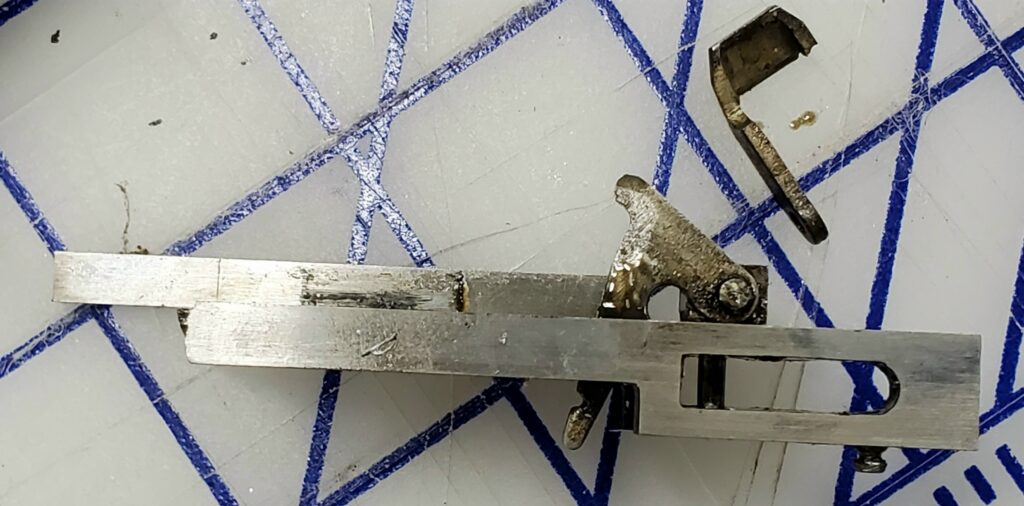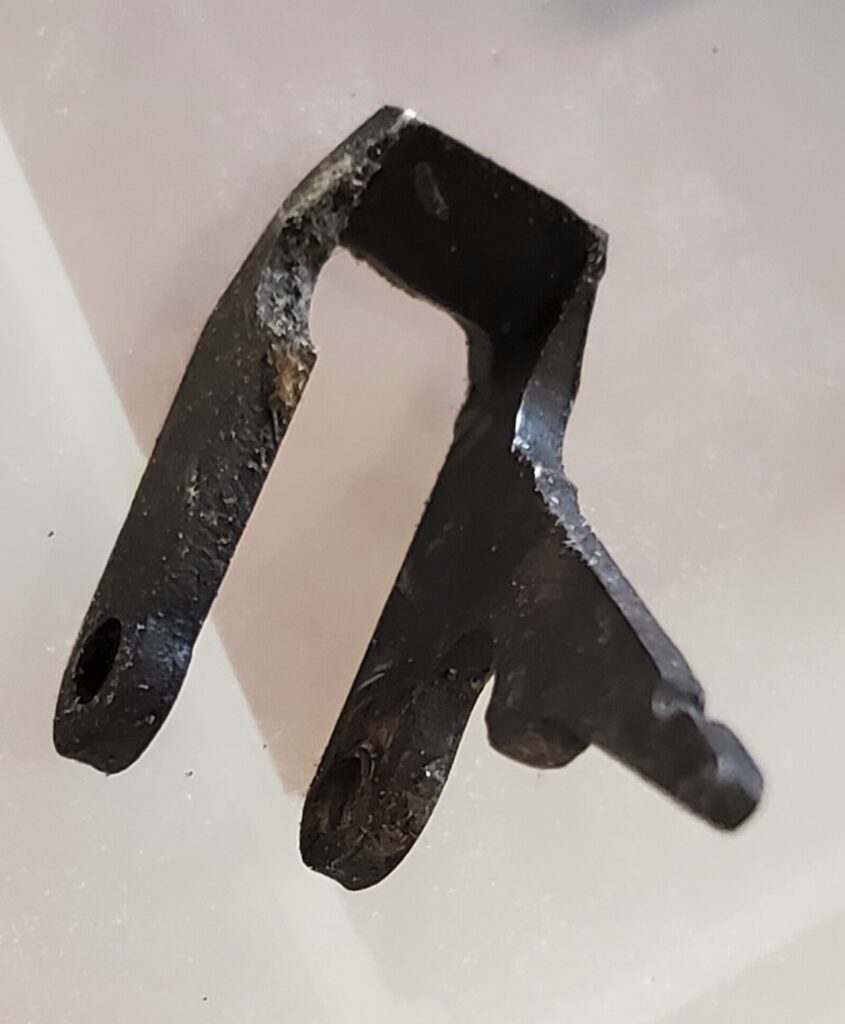This week I’ve been trying to wrap up a type casting job on my Monotype Composition Caster, when an internal part on my 12-point Lanston mould broke.
I had been casting some 12-point low spaces, and when I got down to the em/6 size (only 2 points thick) I found that I had to run the caster very fast, around 165 RPM, to avoid nozzle freezes. The nozzle injects molten type metal into the mould, but if the caster is run too slow for the size of type and metal temperature, metal will remain solidified in the nozzle itself so no type is cast.
At this speed, however, the low-quad mechanism was not acting reliably, instead chattering in and out of operation. This mechanism recognizes special matrices in the matcase and forces the mould to keep the upper blade closed so a short space is cast. If the upper blade opens with the main blade, you get a high space, the same height as the shoulders of a piece of type. These are generally undesirable because they can work up while printing and end up printing a small black rectangle instead of the required space.
When I changed the caster to cast a font using the same mould I found that the upper mould blade was not opening properly, either causing low quads to be cast, or type with the face perched oddly on a small leg of metal.
On disassembling the mould I found that the small latch that holds the upper blade moving in unison with the main blade was broken:
 Part of the latch is still attached to the pivot pin on the upper blade. For reference, those are 1″ (25cm) squares in the background. I don’t know if this was just metal fatigue at the most inopportune time (though really, is there ever a good time for a machine to break?), or caused by the chattering low-quad mechanism (probably itself due to worn parts).
Part of the latch is still attached to the pivot pin on the upper blade. For reference, those are 1″ (25cm) squares in the background. I don’t know if this was just metal fatigue at the most inopportune time (though really, is there ever a good time for a machine to break?), or caused by the chattering low-quad mechanism (probably itself due to worn parts).
Monotype moulds contain many custom-fitted parts, and I’m hoping this is not one of them, so that I can replace this with the latch from another mould to get casting again. This latch is borrowed from another 12-point mould which I own: This does not look like a custom-fitted part, and there is no reason it would be, so I hope a simple transplant will work. The latch pivot pin presses in and out easily (it is trapped by the main blade once parts are assembled) so this should be a simple job.
This does not look like a custom-fitted part, and there is no reason it would be, so I hope a simple transplant will work. The latch pivot pin presses in and out easily (it is trapped by the main blade once parts are assembled) so this should be a simple job.
Even if this gets me up and running again, I’m left short one latch, so I’ll have to look at this part to see if I can make a replacement. The original part seems to be made from sheet steel 1/16″ (1.6mm) thick, probably punched and bent to shape, with a bit of grinding to form the actual latch surface (the top edge in the photo). The bending would have to be done hot to permit such a sharp bend.
To make a replacement, probably machined from a solid block, I’ll need to identify the important features so I know which surfaces need precise tolerances. I don’t think it would be practical for me to make this from flat metal because I don’t think I could get the sharp bends on such a small part, but I will look into making it from a piece of square tubing if I can find something suitable. From the photo, the part seems to be about ⅜″ wide so there might be something available. I’d also have to check if the part is hardened, which would complicate making a replacement.
Update
The borrowed part fits, so it seems this is indeed an interchangeable part. I got my casting done.

Leave a Reply